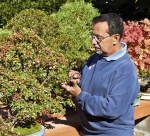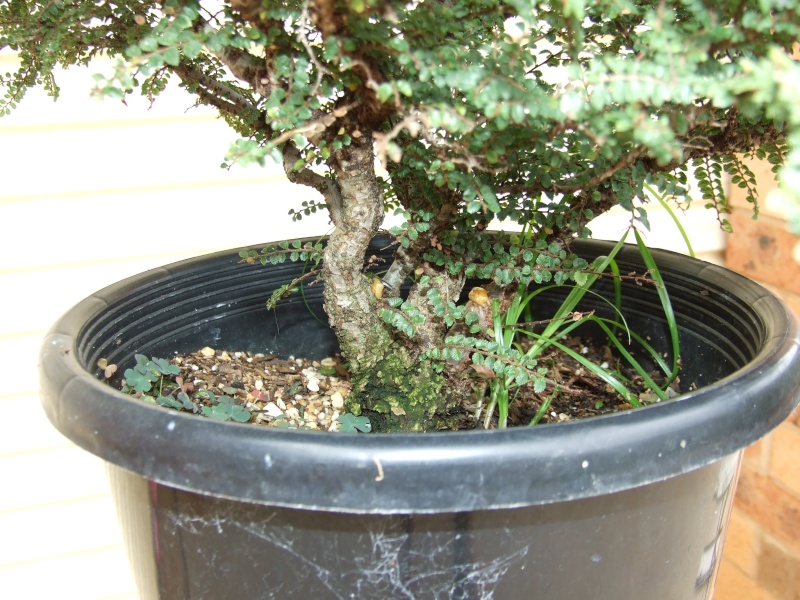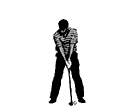Masakuni Tools Contact
+10
Dave Martin
Peter Adams
Billy M. Rhodes
Mark
Marty Weiser
Ravi Kiran
Bugeye
Todd Ellis
William N. Valavanis
Brett Summers
14 posters
Page 1 of 2
Page 1 of 2 • 1, 2 
 Masakuni Tools Contact
Masakuni Tools Contact
I recently started purchasing Masakuni Tools. I believed them to be of the highest quality so was very disappointed to find chips in the cutting blade of my black steel branch cutters after minimal use. I can only figure that it is from cutting branches with small wire on them. I have never had this happen with cheaper cutters and it is the way I have always been taught and worked. Wire the branches then trim as need be. The blade is very narrow on the Masakuni cutters which gives a great cut but it is no good for me if small wire is going to damage the blade.
I have tried to contact Masakuni though the email on their website to get their thoughts on this but I am getting no response.
Any ideas on how to contact them!
I have tried to contact Masakuni though the email on their website to get their thoughts on this but I am getting no response.
Any ideas on how to contact them!
Brett Summers- Member
 Masakuni Tools Contact
Masakuni Tools Contact
Hello Brett. I have heard this before about Masakuni. The steel they produce is not only extremely hard but also brittle. Try Graham Potter at Kaizenbonsai.com. He deals with Masakuni tools and may have an alternative contact for you.
Guest- Guest
 Re: Masakuni Tools Contact
Re: Masakuni Tools Contact
Brett:
You have been taught the incorrect way of trimming bonsai, I'd look for a new instructor. Fine quality pruners, of which Masakuni is the best, should never be used to cut wire!
Here is the contact:
MASAKUNI COMPANY
5-26 Asahi-1 Chome, Kawaguchi-shi
Saitama-Ken, JAPAN 332
I guarantee you Mr. Masakuni will tell you the same that fine quality trimming shears should not be ever used to cut wire. If you must, try using heavy duty, clunky Chinese bonsai tools. They are not sharp anyways and cutting wire will probably not damage them. I still suggest you search for another instructor.
Bill
You have been taught the incorrect way of trimming bonsai, I'd look for a new instructor. Fine quality pruners, of which Masakuni is the best, should never be used to cut wire!
Here is the contact:
MASAKUNI COMPANY
5-26 Asahi-1 Chome, Kawaguchi-shi
Saitama-Ken, JAPAN 332
I guarantee you Mr. Masakuni will tell you the same that fine quality trimming shears should not be ever used to cut wire. If you must, try using heavy duty, clunky Chinese bonsai tools. They are not sharp anyways and cutting wire will probably not damage them. I still suggest you search for another instructor.
Bill

William N. Valavanis- Member
 Re: Masakuni Tools Contact
Re: Masakuni Tools Contact
Brett,
One of my first lessons in bonsai was, never use your good scissors to cut wire. The only exception was the scissor-shaped wire cutter. However, I also saw that this "suggestion" was often a "do as I say, not as I do", especially when a presentor was pressed for time. I have often used my trimmers to cut small wire (to wire something, not a branch already wired). I use the back part of the scissor, near the fulcrum, which I rarely ever used for pruning.
Best, Todd
One of my first lessons in bonsai was, never use your good scissors to cut wire. The only exception was the scissor-shaped wire cutter. However, I also saw that this "suggestion" was often a "do as I say, not as I do", especially when a presentor was pressed for time. I have often used my trimmers to cut small wire (to wire something, not a branch already wired). I use the back part of the scissor, near the fulcrum, which I rarely ever used for pruning.
Best, Todd

Todd Ellis- Member
 Re: Masakuni Tools Contact
Re: Masakuni Tools Contact
Yes. Definitely get a new instructor! He taught you how to destroy good tools.
Bugeye- Member
 Re: Masakuni Tools Contact
Re: Masakuni Tools Contact
Couldn't agree more with Will Valvanis... Half of what you are taught is correct "The Wire first then cut" part but "Use a regular branch cutter to cut through the wire" is the incorrect part...
Ravi
Ravi

Ravi Kiran- Member
 Re: Masakuni Tools Contact
Re: Masakuni Tools Contact
One of the instructors was Peter Adams. He was using branch cutters to actually cut the wire of the role occasionally and stated.
" Any decent pair of branch cutters will not be bothered by cutting through wire" Not sure I need a better instructor than him
Now if I am to wire a tree and then trim the branches back am I supposed to first cut through the wire with wire cutters and then cut the branch. This is something I have never seen done and I figure would be quite annoying. If I can use cheaper branch cutters as Peter Adams suggests why would I spend more on a supposedly better tool that I must treat with kid gloves? My cheaper tools give a fine cut as well!
Thanks for the Contact idea's guys I will try to get some dialogue with Masakuni on this.
" Any decent pair of branch cutters will not be bothered by cutting through wire" Not sure I need a better instructor than him
Now if I am to wire a tree and then trim the branches back am I supposed to first cut through the wire with wire cutters and then cut the branch. This is something I have never seen done and I figure would be quite annoying. If I can use cheaper branch cutters as Peter Adams suggests why would I spend more on a supposedly better tool that I must treat with kid gloves? My cheaper tools give a fine cut as well!
Thanks for the Contact idea's guys I will try to get some dialogue with Masakuni on this.
Brett Summers- Member
 Re: Masakuni Tools Contact
Re: Masakuni Tools Contact
Hello again Brett. I employ the same method as you and I know many others that prune both branch and wire at the same time. I dont consider this a bad practice and my tools dont suffer either.
Guest- Guest
 Re: Masakuni Tools Contact
Re: Masakuni Tools Contact
What type of wire are you cutting? Most aluminum wire is soft enough that it will not nick most cutters. Copper wire is significantly harder and will nick most cutters. However, some hardwoods can be even harder than copper.
In addition to the hardness/brittleness of the steel (they are generally related), the angle of the cutting edge will influence how easily the edge nicks. Wire cutters are sharpened to a larger angle than cutters designed for clean finish cuts. The combination of a very hard steel and a narrow cutting angle will give very clean cuts need less frequent sharpening, but are more prone to nicking.
In addition to the hardness/brittleness of the steel (they are generally related), the angle of the cutting edge will influence how easily the edge nicks. Wire cutters are sharpened to a larger angle than cutters designed for clean finish cuts. The combination of a very hard steel and a narrow cutting angle will give very clean cuts need less frequent sharpening, but are more prone to nicking.
Marty Weiser- Member
 Re: Masakuni Tools Contact
Re: Masakuni Tools Contact
It is aluminium wire and yes the Masakuni cutters have a thinner leading edge than others I have used and considered this maybe a factor in this issue.
Graham Potter goes into some depth describing the way Nobuichi tools are a combination of hard and soft steel wich gives them a long lasting edge and less chance of chipping. As said a samurai sword no matter how sharp is useless if it shatters.
I bought some Nobuichi tools as well but figured as the branch cutters are the ones I most use then I would get the best in black I could. They are little use now and I will have to search for a quality sharpening facility. Yet My mid range Kiku cutters after much use and downgraded to root cutters come up a treat with a few swipes of my sharpening tool.
Graham Potter goes into some depth describing the way Nobuichi tools are a combination of hard and soft steel wich gives them a long lasting edge and less chance of chipping. As said a samurai sword no matter how sharp is useless if it shatters.
I bought some Nobuichi tools as well but figured as the branch cutters are the ones I most use then I would get the best in black I could. They are little use now and I will have to search for a quality sharpening facility. Yet My mid range Kiku cutters after much use and downgraded to root cutters come up a treat with a few swipes of my sharpening tool.
Brett Summers- Member
 Re: Masakuni Tools Contact
Re: Masakuni Tools Contact
Interesting conversation.
As far as I can tell, the only reasons for using this method is that it faster and it is also easier. For many doing bonsai, that is the driving force in choosing a path to follow. This group may very well make up the majority. It is not difficult to find "teachers" that promote this school of thought. It is in fact easy. Tell people what appeals to their nature and they will appoint you a "master" and sing your praises all over the internet.
I do not doubt that you learned this method from Peter Adams. I heard Mr.Adams explain to a hall full of Bonsai enthusiasts, that you can quickly and easily"prune" a Maple Bonsai by simply snapping off branch's with your hands. As I looked around the room, to my surprise,
people were actually writing this down in their notes. The reason for using this method was NOT better Bonsai but quick and easy.
Why do people choose to use aluminum wire when copper has better qualities? Same answer, not for better Bonsai but cheap and easy.
If you buy Masakuni tools I am certain that Masakuni assumes you are interested in using them properly and understand what they are designed for.
Mark
As far as I can tell, the only reasons for using this method is that it faster and it is also easier. For many doing bonsai, that is the driving force in choosing a path to follow. This group may very well make up the majority. It is not difficult to find "teachers" that promote this school of thought. It is in fact easy. Tell people what appeals to their nature and they will appoint you a "master" and sing your praises all over the internet.
I do not doubt that you learned this method from Peter Adams. I heard Mr.Adams explain to a hall full of Bonsai enthusiasts, that you can quickly and easily"prune" a Maple Bonsai by simply snapping off branch's with your hands. As I looked around the room, to my surprise,
people were actually writing this down in their notes. The reason for using this method was NOT better Bonsai but quick and easy.
Why do people choose to use aluminum wire when copper has better qualities? Same answer, not for better Bonsai but cheap and easy.
If you buy Masakuni tools I am certain that Masakuni assumes you are interested in using them properly and understand what they are designed for.
Mark
Mark- Member
 Re: Masakuni Tools Contact
Re: Masakuni Tools Contact
I have seen bonsai "instructors" use pruning cutters to cut wire, BUT, I wouldn't do it.
As someone above said. "The right tool for the job."
As someone above said. "The right tool for the job."

Billy M. Rhodes- Member
 Re: Masakuni Tools Contact
Re: Masakuni Tools Contact
Hey Billy
In any profession finding a way that is faster and has no drawbacks is only a plus. If I use masakuni tools and cut wire with wire cutters before trimming a branch what advantage have I gained over using a more durable tool that will happily cut through wire and branch?
Hey Mark
I kinda think snapping the branches on a maple would take longer than cutting them but if some how it was faster and has no draw back why not. Peter's trees look great to me and I don't believe he would give care advice only to be popular.
Walter recently states that he often hedge trims all his trees. One of the hints that allows him to care for so many trees. Bonsai is not about choosing the hardest path it is about results.
Is there any advantage to spending more money on the masakuni cutters and then taking two steps to a job that I do in one with cheaper cutters? Is the cut from Masakuni better than Nobuchi? Does it equate to actual better results?
In any profession finding a way that is faster and has no drawbacks is only a plus. If I use masakuni tools and cut wire with wire cutters before trimming a branch what advantage have I gained over using a more durable tool that will happily cut through wire and branch?
Hey Mark
I kinda think snapping the branches on a maple would take longer than cutting them but if some how it was faster and has no draw back why not. Peter's trees look great to me and I don't believe he would give care advice only to be popular.
Walter recently states that he often hedge trims all his trees. One of the hints that allows him to care for so many trees. Bonsai is not about choosing the hardest path it is about results.
Is there any advantage to spending more money on the masakuni cutters and then taking two steps to a job that I do in one with cheaper cutters? Is the cut from Masakuni better than Nobuchi? Does it equate to actual better results?
Brett Summers- Member
 masakuni tools contact
masakuni tools contact
Hi Brett,
Amazing to me how much can be made out of so little. If you remember, I was going thru the tree in question quite rapidly to make and affect changes to the DESIGN. Later, I went back and made "proper" cuts. The point I was making was that in order to grab an idea quickly, you have to nail it down spontaneously and that sometimes, deliberating over the ideal tool is nothing to do with the creative process and worse, it can interrupt the flow of ideas which are far more important than mere technique.
All my bonsai life I have been in hot water with the bonsai techies, but artists I respect seem to like my trees. I was interested to read that a better instructor was needed .. a comment that is fairly typical. That's your techie sure enough!
Thanks for your support Brett and I look forward to working with you again this July in Sydney.
Regards,
Peter Adams
Amazing to me how much can be made out of so little. If you remember, I was going thru the tree in question quite rapidly to make and affect changes to the DESIGN. Later, I went back and made "proper" cuts. The point I was making was that in order to grab an idea quickly, you have to nail it down spontaneously and that sometimes, deliberating over the ideal tool is nothing to do with the creative process and worse, it can interrupt the flow of ideas which are far more important than mere technique.
All my bonsai life I have been in hot water with the bonsai techies, but artists I respect seem to like my trees. I was interested to read that a better instructor was needed .. a comment that is fairly typical. That's your techie sure enough!
Thanks for your support Brett and I look forward to working with you again this July in Sydney.
Regards,
Peter Adams
Peter Adams- Member
 Re: Masakuni Tools Contact
Re: Masakuni Tools Contact
Don't worry Peter, those of us who have seen your Maples in the UK and have read your books and understand your artistic approach to the design process know just how capable you are.
One only has to look at the names of the people you have "instructed" to realise where you rank.
One only has to look at the names of the people you have "instructed" to realise where you rank.

Dave Martin- Member
 masakuni tool contact
masakuni tool contact
Thanks Dave -- once again, I appreciate the support! Cheers mate!
Best regards,
Peter
Best regards,
Peter
Peter Adams- Member
 Re: Masakuni Tools Contact
Re: Masakuni Tools Contact
Hey Brett,
One of the great things about Bonsai is we get to choose our own path. Your trees, your tools, your techniques, your own style and of course
teachers whose advice you follow and those you don't. You will find it fairly typical of self taught Western teachers not to tolerate any disagreement with their teachings and to resort to name calling for those that do. You mention a method recommended by another European teacher to" hedge trim" Bonsai for quick shaping. You mentioned this appealed to you as it sounded like a real time saver. The internet is filled with this kind of advice and not surprising many embrace it. I do not subscribe to these teachings and stand by my original point that they are not used to create better Bonsai but for the reasons I stated.
Best Regards,
Mark
One of the great things about Bonsai is we get to choose our own path. Your trees, your tools, your techniques, your own style and of course
teachers whose advice you follow and those you don't. You will find it fairly typical of self taught Western teachers not to tolerate any disagreement with their teachings and to resort to name calling for those that do. You mention a method recommended by another European teacher to" hedge trim" Bonsai for quick shaping. You mentioned this appealed to you as it sounded like a real time saver. The internet is filled with this kind of advice and not surprising many embrace it. I do not subscribe to these teachings and stand by my original point that they are not used to create better Bonsai but for the reasons I stated.
Best Regards,
Mark
Mark- Member
 Re: Masakuni Tools Contact
Re: Masakuni Tools Contact
Hi Peter I just checked the School of Bonsai Website and now see they have the date you will be here. Bloody Ripper 
There are no details yet so I can only guess you will be doing workshops if so I think I may have a tree picked out already.
This hokkaido elm "strong" variety I picked up freshly dug out of Ray's field last September. This variety grows quicker than the Usual Hokkaido and it's branches are more flexible.


Thought I had a plan for the triple trunks but now not so sure
I am not sure you did the snapping of the branches down here But I could be wrong. I do remember your suggestion of styling two trees at once so as to be able to keep looking at the tree with a fresh eye. Much the same as when you walk away from a tree and then come back later you see things a little differently. I can relate to that well but never had it put into words before and can see a parallel with the grasping of the moment maybe you suggest with the quick change to the design by snapping branches.
But I could be wrong. I do remember your suggestion of styling two trees at once so as to be able to keep looking at the tree with a fresh eye. Much the same as when you walk away from a tree and then come back later you see things a little differently. I can relate to that well but never had it put into words before and can see a parallel with the grasping of the moment maybe you suggest with the quick change to the design by snapping branches.
My flashes of what I think are genius don't often last long
Will be great to see you down under agian
There are no details yet so I can only guess you will be doing workshops if so I think I may have a tree picked out already.
This hokkaido elm "strong" variety I picked up freshly dug out of Ray's field last September. This variety grows quicker than the Usual Hokkaido and it's branches are more flexible.


Thought I had a plan for the triple trunks but now not so sure
I am not sure you did the snapping of the branches down here
My flashes of what I think are genius don't often last long
Will be great to see you down under agian

Brett Summers- Member
 Re: Masakuni Tools Contact
Re: Masakuni Tools Contact
Dear Peter,
Feeling a little bad that your name got dragged into this post. I am sure those who recommended a change in teacher were not aware that the teacher was you. Had they known things would have been different. I have read your books and regard you highly in the Bonsai world. But tell me, did you actually recommend using branch / concave cutters or shears to cut through wires along with branches?
Respectfully
Ravi
Feeling a little bad that your name got dragged into this post. I am sure those who recommended a change in teacher were not aware that the teacher was you. Had they known things would have been different. I have read your books and regard you highly in the Bonsai world. But tell me, did you actually recommend using branch / concave cutters or shears to cut through wires along with branches?
Respectfully
Ravi

Ravi Kiran- Member
 Re: Masakuni Tools Contact
Re: Masakuni Tools Contact
Not sure If I should be insulted about that post Ravi but life is too short to be upset at such a nice chap as you 
Brett Summers- Member
 Re: Masakuni Tools Contact
Re: Masakuni Tools Contact
Hi Brett,
It is sometime difficult to put thoughts into words. So let me clarify that my true intent of my previous post is not to insult you. No Sir definitely NOT. Pls do not misunderstand. Now that you seems to have had a misunderstanding let me also reiterate that is not my intent to insult Peter in any manner. I truly mean that I hold Peter in very high regard. Some of his trees are design inspirations for me and one of his trees is what I am imitating (best form of flattery).
However the reason I asked Peter the question is that sometimes when something is said it is understood differently and carried out in a totally different manner. The main point of this thread being that of tools and the purpose for which they can be used is what I wanted to clarify with Peter. No sarcasm or any such derogatory intent whatsoever.
Ravi
It is sometime difficult to put thoughts into words. So let me clarify that my true intent of my previous post is not to insult you. No Sir definitely NOT. Pls do not misunderstand. Now that you seems to have had a misunderstanding let me also reiterate that is not my intent to insult Peter in any manner. I truly mean that I hold Peter in very high regard. Some of his trees are design inspirations for me and one of his trees is what I am imitating (best form of flattery).
However the reason I asked Peter the question is that sometimes when something is said it is understood differently and carried out in a totally different manner. The main point of this thread being that of tools and the purpose for which they can be used is what I wanted to clarify with Peter. No sarcasm or any such derogatory intent whatsoever.
Ravi

Ravi Kiran- Member
 Re: Masakuni Tools Contact
Re: Masakuni Tools Contact
Ravi,
simply put, you will damage the Masakuni, if it is not designed for a specific purpose.
Painters, place their tube colours on the palette in the same order each time for ease of application / mixing. BUT that is only important if you are in the purple passion and applying an idea in paint.
Somehow Bonsai training doesn't quite hit the purple passion of design.
BUT then I use a drawn design to help my memory, even if I am demonstrating.
My concave is from Masakuni, bought back in 1982/3, and I respect it.
I have a cheapo root pruner, that has been used to cut jewellery alloys and titanium/niobium/tantalum wire and sheet, I don't respect it.
There should be no offence given or taken in this simple straightforward topic.
Khaimraj
simply put, you will damage the Masakuni, if it is not designed for a specific purpose.
Painters, place their tube colours on the palette in the same order each time for ease of application / mixing. BUT that is only important if you are in the purple passion and applying an idea in paint.
Somehow Bonsai training doesn't quite hit the purple passion of design.
BUT then I use a drawn design to help my memory, even if I am demonstrating.
My concave is from Masakuni, bought back in 1982/3, and I respect it.
I have a cheapo root pruner, that has been used to cut jewellery alloys and titanium/niobium/tantalum wire and sheet, I don't respect it.
There should be no offence given or taken in this simple straightforward topic.
Khaimraj

Khaimraj Seepersad- Member
 Re: Masakuni Tools Contact
Re: Masakuni Tools Contact
Sorry Ravi. As I said I know you are a good chap I should not have made you explain yourself.
My apologies!
My apologies!
Brett Summers- Member
 Re: Masakuni Tools Contact
Re: Masakuni Tools Contact
This post has missed an important point about bonsai tools and the difference between the Japanese approach to steel tools and the western approach.
Wood workers frequently discuss this difference as the tools imply different techniques for working wood. The technique doesn't vary for bonsai as in wood working but the nature of the steel does.
Western tool makers typically temper their wood cutting tool edges so that the Rockwell hardness (Rockwell hardness is a measure of the ability of a metal to resist indentation) is high but the edge is still tough (i.e. can take some shock. Toughness is measured by the Charpy impact test, a destructive test. However, cutting wire with a wood cutting tool would be a form of shock), but that the sharpness of the edge will not last as long due to abrading. Japanese tools are typically tempered at a higher Rockwell hardness so that the steel stays sharper longer but is more brittle. It has to do with the chemic transformation that happens between martensite and austenite in steel when tempering. (If you want more info Google martensite, retained austenite and carbides.) Western tools are Rockwell C56-60, Japanese tools are usually Rockwell C60-62. The small difference in value makes a big difference in tool performance.
Chemical composition of the steel also has an important role, The finer the grain size of the martensite and austenite, the better the edge holding.
Finer grade steel is more expensive. I've seen a Japanese tool shop where old anchor chain was being used to make edge tools. Probably not the best steel but I guess you can't judge unless you look under a microscope.
A traditional way to overcome the trade off between hard but brittle steel versus softer but tougher steel is to laminate the steel. A laminated blade is made of layers —a very hard to keep a keen edge, the other softer, for toughness and durability, hammer-forged together (like samurai swords) and super sharp. Very fine steel is hammer forged to create many alternating layers. Incidentally the Japanese were not the only culture to do this. Blade makers in Toledo Spain were doing this before Christ was born.
It's a long winded way to say Japanese bonsai tools have a harder longer lasting keen edge but more brittle edge and require more specialize care in use. Wood cutting blades with a lower Rockwell hardness can cut an occasional wire without too much ill effect, although it is not a recommended practice.
I will say that I personally have had bad luck with Masakuni tools. I have owned several. The first concave cutter I purchased actually bent the jaws when trying to prune an elm branch. This ruined the geometry of the jaw and made the tool practically useless. I felt the tool was not tempered properly. Another tool was a red handled heavy duty Masakuni straight edge scissors. The tool has worked well and has replaceable blades which I am needing to replace one of these days. My main problem with this one is the lock that keeps the blades together when not in use. There is a black steel lever that fits into a notch cast into the handle body. The handle body seems to be some sort of aluminum alloy and the lever is steel so the lever has worn away a grove in the softer handle body and the tool does not stay locked which is a real pain when putting it back in my pocket when in the garden. See the arrows below.

The last (and final Masakuni tool) I bought came with a nick already in the cutting surface. As I bought it while overseas I didn't have a chance to return it to the vendor. Also with this tool after a year of solid use the center pin wore away and the blades no longer worked efficiently as the slop pushed the cutting surfaces apart. Also the handle of this tool would frequently bend and needed to be rebent to shape. In typing to repair the tool I snapped one of the blades and had to regrind the tool to a shorter length. I used a water cooled grinder to keep its temper. I also drilled out the pin, reamed the hole and made a new pin from a brass machine screw peened over. It works in the repaired albeit shorter state. I'd show a photo of the tool but it is pretty distinctive so I'd rather not.
I now aim at more moderate priced tools and keep them sharp and they seem to do well and are easier on the pocket book.
Wood workers frequently discuss this difference as the tools imply different techniques for working wood. The technique doesn't vary for bonsai as in wood working but the nature of the steel does.
Western tool makers typically temper their wood cutting tool edges so that the Rockwell hardness (Rockwell hardness is a measure of the ability of a metal to resist indentation) is high but the edge is still tough (i.e. can take some shock. Toughness is measured by the Charpy impact test, a destructive test. However, cutting wire with a wood cutting tool would be a form of shock), but that the sharpness of the edge will not last as long due to abrading. Japanese tools are typically tempered at a higher Rockwell hardness so that the steel stays sharper longer but is more brittle. It has to do with the chemic transformation that happens between martensite and austenite in steel when tempering. (If you want more info Google martensite, retained austenite and carbides.) Western tools are Rockwell C56-60, Japanese tools are usually Rockwell C60-62. The small difference in value makes a big difference in tool performance.
Chemical composition of the steel also has an important role, The finer the grain size of the martensite and austenite, the better the edge holding.
Finer grade steel is more expensive. I've seen a Japanese tool shop where old anchor chain was being used to make edge tools. Probably not the best steel but I guess you can't judge unless you look under a microscope.
A traditional way to overcome the trade off between hard but brittle steel versus softer but tougher steel is to laminate the steel. A laminated blade is made of layers —a very hard to keep a keen edge, the other softer, for toughness and durability, hammer-forged together (like samurai swords) and super sharp. Very fine steel is hammer forged to create many alternating layers. Incidentally the Japanese were not the only culture to do this. Blade makers in Toledo Spain were doing this before Christ was born.
It's a long winded way to say Japanese bonsai tools have a harder longer lasting keen edge but more brittle edge and require more specialize care in use. Wood cutting blades with a lower Rockwell hardness can cut an occasional wire without too much ill effect, although it is not a recommended practice.
I will say that I personally have had bad luck with Masakuni tools. I have owned several. The first concave cutter I purchased actually bent the jaws when trying to prune an elm branch. This ruined the geometry of the jaw and made the tool practically useless. I felt the tool was not tempered properly. Another tool was a red handled heavy duty Masakuni straight edge scissors. The tool has worked well and has replaceable blades which I am needing to replace one of these days. My main problem with this one is the lock that keeps the blades together when not in use. There is a black steel lever that fits into a notch cast into the handle body. The handle body seems to be some sort of aluminum alloy and the lever is steel so the lever has worn away a grove in the softer handle body and the tool does not stay locked which is a real pain when putting it back in my pocket when in the garden. See the arrows below.

The last (and final Masakuni tool) I bought came with a nick already in the cutting surface. As I bought it while overseas I didn't have a chance to return it to the vendor. Also with this tool after a year of solid use the center pin wore away and the blades no longer worked efficiently as the slop pushed the cutting surfaces apart. Also the handle of this tool would frequently bend and needed to be rebent to shape. In typing to repair the tool I snapped one of the blades and had to regrind the tool to a shorter length. I used a water cooled grinder to keep its temper. I also drilled out the pin, reamed the hole and made a new pin from a brass machine screw peened over. It works in the repaired albeit shorter state. I'd show a photo of the tool but it is pretty distinctive so I'd rather not.
I now aim at more moderate priced tools and keep them sharp and they seem to do well and are easier on the pocket book.

Rob Kempinski- Member
Page 1 of 2 • 1, 2 
 Similar topics
Similar topics» Grinder or dremel?
» tools...what are you using
» Which Tools?
» Tools ....
» Tools: What to get / where to get them
» tools...what are you using
» Which Tools?
» Tools ....
» Tools: What to get / where to get them
Page 1 of 2
Permissions in this forum:
You cannot reply to topics in this forum






